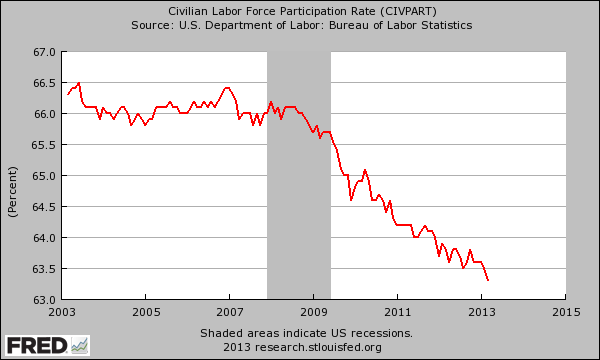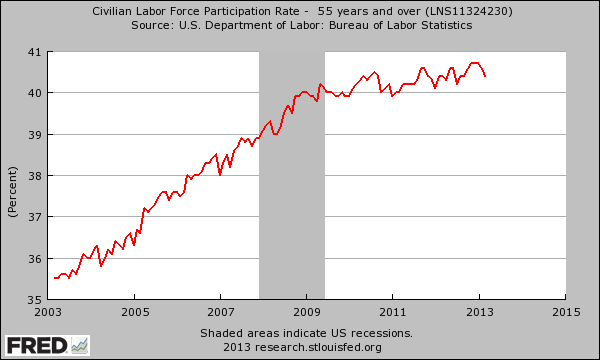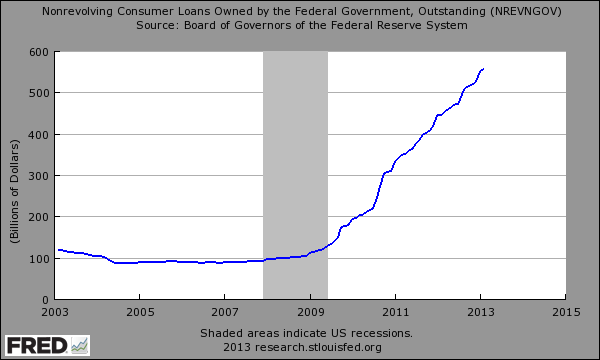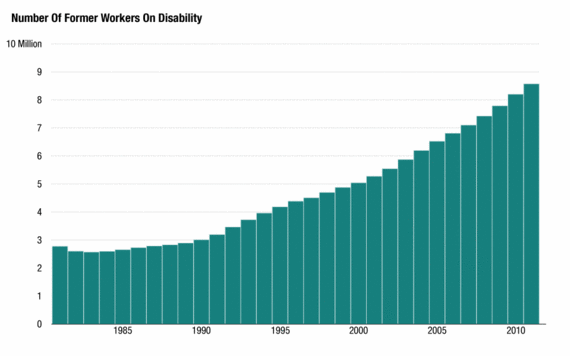May 1, 2013
One of the common views regarding the labor participation rate declining is that many baby boomers are retiring and leaving the work force. Unfortunately many are finding that retirement is a myth when you are broke and many will be working deep into their later years. So when we examine the numbers we actually find a large part of our older labor force is still fully engaged in some type of work. It is interesting to look at many dynamic areas to try to ascertain why the drop in the labor force is actually occurring. Digging for that needle in the economic haystack can be a challenge. The labor force participation rate is a better indicator of how many people in our society are actually working. We already know that the drop in the unemployment rate is largely due to hundreds of thousands of Americans simply not being in the labor force anymore. Just because you sweep dust under the rug doesn’t mean it is now gone. So where have all the workers gone?
Civilian labor force participation rate
The labor force participation rate has steadily declined throughout the last decade and more steadily since the Great Recession hit:
We are now at multi-decade lows when it comes to those participating in the labor force. The common Cinderella storyline behind this drop has to do with our aging population and many older Americans entering blissfully into retirement. But that presupposes that people can actually afford to retire which for most Americans is largely not the case. What we find is really a few big reasons why the rate has steadily fallen and none are exactly positive when it comes to the overall economy.
Case #1 – Older workers
What is fascinating when we look at the data carefully, we find that many older Americans are still working:
This is at a peak and has actually increased steadily throughout the decade and has held steady which somewhat flies in the face of the argument that older Americans are “retiring” in droves. Sure, many baby boomers are hitting what we would call retirement age but the idea that all of these people are somehow quitting work to drink Margaritas on South Beach is one big myth. The above chart is a clear example as to what is really going on. Older Americans are going to be working deep into retirement and the new model of retirement isno retirement at all.
Case #2 – College
Students are not part of the labor force since they are actively pursuing a degree. What is interesting given the massive jump in student debt is that many are simply living off student loans:
In essence the government is financing many Americans via student loans for a few years trying to wait out the current economic crisis. Many simply will go back to school for other degrees. It is interesting when you look at the above chart since the massive rise above is primarily because of student debt. It also coincides that the rise was perfectly timed with the recession yet has not turned back.
Case #3 – Disability
It is amazing how many Americans are now on disability:
The dramatic rise especially in the last decade does not even remotely coincide with the normal rise in the population. In other words, all of sudden a larger percentage of our population is going on disability. A big part of this of course is because of the weak economy.
“(NPR) In Hale County, Alabama, nearly 1 in 4 working-age adults is on disability.[2] On the day government checks come in every month, banks stay open late, Main Street fills up with cars, and anybody looking to unload an old TV or armchair has a yard sale.Sonny Ryan, a retired judge in town, didn’t hear disability cases in his courtroom. But the subject came up often. He described one exchange he had with a man who was on disability but looked healthy.“Just out of curiosity, what is your disability?” the judge asked from the bench.“I have high blood pressure,” the man said.“So do I,” the judge said. “What else?”“I have diabetes.”“So do I.”
There are obviously many legitimate reasons to be on disability but the jump is unjustified. The NPR story is fascinating because the underlying message is that many Americans are simply unqualified to work in the current economy and opt to go on disability as a method of getting income. Where have all the workers gone? Apparently many are working into retirement age, many are waiting it out in college using loans as a form of income, and others are on disability. Now does that sound like a good reason for the unemployment rate to go down?





No comments:
Post a Comment